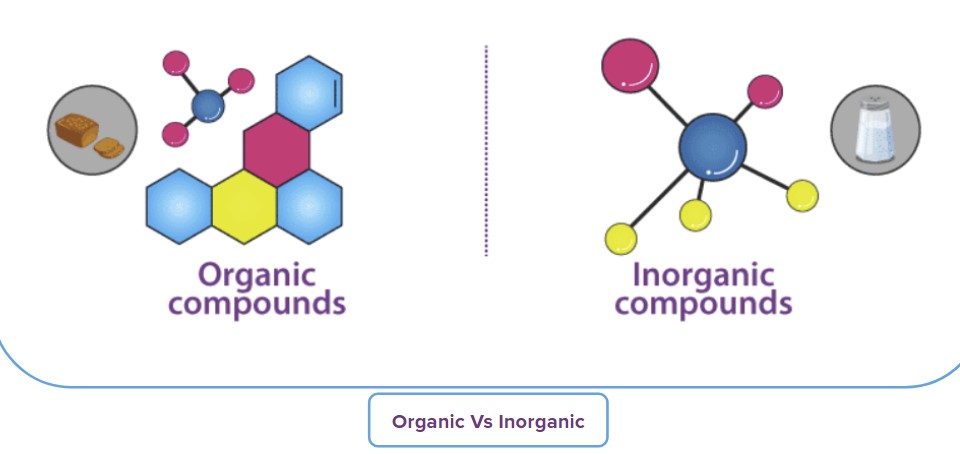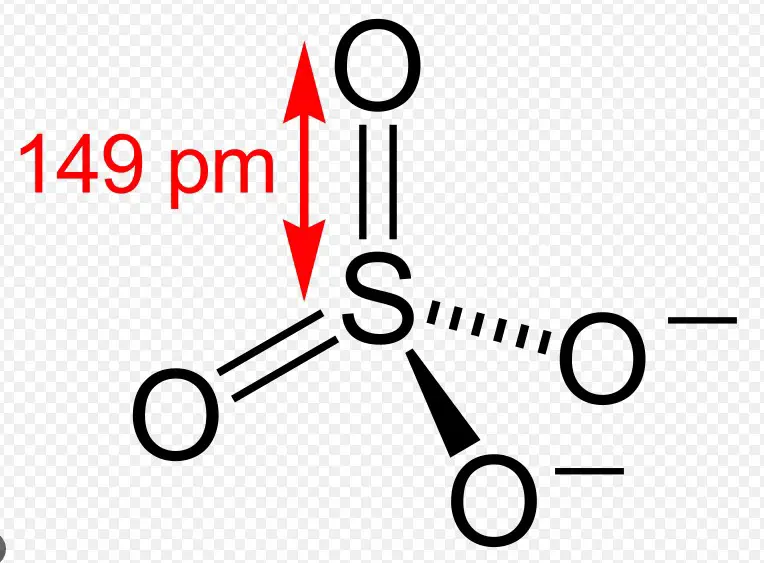Sulfur, an essential chemical element found in nature, serves pivotal roles across diverse industries and biological systems. Present in both organic and inorganic forms, sulfur’s versatility and utility stem from its unique chemical properties. This element not only supports life but also drives numerous industrial processes critical to modern society.
The key difference between organic and inorganic sulfur lies in their chemical composition and the environments in which they are found. Organic sulfur is bound within carbon-based molecular frameworks, typically in amino acids and proteins, essential for life. In contrast, inorganic sulfur does not involve carbon-hydrogen bonds and is found in minerals and salts like sulfates and sulfides.
Sulfur’s dual forms affect everything from nutrient cycles in the environment to advancements in pharmaceuticals and agriculture. Its presence in two distinct forms allows it to participate in a variety of chemical reactions and processes, making it indispensable in both natural ecosystems and engineered systems.

Sulfur Basics
What is Sulfur?
Sulfur is a naturally occurring element, identified on the periodic table by the symbol ‘S’ and atomic number 16. It is non-metallic, typically yellow in color, and known for its distinctive odor when combined with other elements. Sulfur is essential for all life and is a key component in proteins and enzymes.
Forms of Sulfur in Nature
Sulfur exists in various forms in nature. These include:
- Elemental Sulfur: Found in volcanic and geothermal regions, elemental sulfur occurs naturally around hot springs and volcanic craters.
- Sulfide Minerals: These are compounds where sulfur is combined with metals, such as pyrite (iron sulfide, commonly known as fool’s gold).
- Sulfate Minerals: Compounds like gypsum (calcium sulfate) are common in evaporative environments like salt flats.
Organic Sulfur Explained
Definition and Sources
Organic sulfur compounds are those where sulfur is bonded with carbon within organic molecules. Common sources of organic sulfur include:
- Amino Acids: Methionine and cysteine are sulfur-containing amino acids vital to protein synthesis in living organisms.
- Vitamins and Coenzymes: Thiamine (vitamin B1) and biotin contain sulfur, playing crucial roles in metabolic processes.
Key Characteristics
The key characteristics of organic sulfur include its volatility and ability to form diverse compounds essential for life. Its presence in biotin and thiamine underscores its role in helping enzymes function properly.
Role in Organic Chemistry
In organic chemistry, sulfur’s roles include:
- Catalysis: Sulfur compounds often act as catalysts in organic reactions.
- Structural: As part of certain amino acids, sulfur helps stabilize protein structures by forming disulfide bonds.
Inorganic Sulfur Overview
Definition and Common Forms
Inorganic sulfur refers to sulfur compounds not bonded to carbon. Common forms include:
- Sulfates: Compounds like magnesium sulfate, used extensively in industry.
- Sulfides: Such as galena (lead sulfide), important in metal ore mining.
Key Characteristics
Inorganic sulfur compounds are characterized by their stability and high melting points. These compounds are crucial in various industrial processes due to their chemical properties.
Role in Inorganic Compounds
Sulfur’s role in inorganic compounds includes:
- Oxidation-Reduction Reactions: In processes like the production of sulfuric acid.
- Catalysis: In the petroleum industry for removing unwanted organic compounds.
Production and Isolation
Extracting Organic Sulfur
The extraction of organic sulfur typically involves:
- Biological Extraction: Sulfur is extracted from natural organic compounds through processes such as microbial degradation or extraction from plant and animal tissues.
Mining and Processing Inorganic Sulfur
Steps involved in the mining and processing of inorganic sulfur include:
- Frasch Process: A method to extract sulfur from underground, primarily used when large deposits are found in salt domes.
- Mining Sulfide Ores: Extracting metals from sulfide ores involves separating the sulfur through smelting.
Chemical Properties
Reactivity of Organic Sulfur
Organic sulfur compounds are generally more reactive due to their ability to form diverse chemical bonds. Examples include:
- Transformations in Pharmaceuticals: Sulfur’s reactivity is harnessed to create more effective drug formulations.
- Agricultural Applications: Used in pesticides and soil conditioners.
Reactivity of Inorganic Sulfur
Inorganic sulfur is less reactive but crucial in many large-scale industrial processes, such as:
- Acid Production: For the manufacture of sulfuric acid, a key industrial chemical.
- Metal Refining: Sulfur plays a role in the extraction and purification of metals from their ores.

Biological Implications
Organic Sulfur in Biological Systems
Organic sulfur plays a crucial role in biological systems, primarily through its presence in amino acids such as methionine and cysteine, which are vital for protein synthesis. These sulfur-containing amino acids are essential for the formation of proteins and active biological compounds such as hormones and enzymes, which facilitate numerous biochemical processes including:
- Detoxification: Sulfur participates in liver functions to detoxify substances.
- Metabolic Functions: It aids in the metabolism of fats, helping in energy production.
Inorganic Sulfur and Its Effects
In contrast, inorganic sulfur, found mainly in soil and water, impacts biological systems differently. Its presence is critical in:
- Plant Nutrition: Sulfur is a key nutrient for plant growth, facilitating chlorophyll synthesis and protein production.
- Microbial Activity: In soil, sulfur affects microbial degradation processes that recycle nutrients.
Environmental Impact
Organic Sulfur in the Environment
Organic sulfur compounds in the environment are primarily derived from decomposing organic matter. These compounds contribute to the nutrient cycles and are involved in:
- Soil Health: Enhancing soil fertility through the incorporation into organic matter.
- Water Systems: Acting as biochemical agents in aquatic ecosystems.
Inorganic Sulfur Pollution
Inorganic sulfur, however, can contribute to environmental challenges, particularly:
- Acid Rain: When sulfur dioxide from industrial emissions combines with rainwater, it leads to acid rain, which can damage forests and aquatic habitats.
- Water Pollution: Industrial discharges of sulfates into water bodies lead to contamination that can harm aquatic life.
Industrial Applications
Uses of Organic Sulfur
Organic sulfur finds multiple applications across various industries including:
- Pharmaceuticals: As an essential element in antibiotics and other drugs.
- Agriculture: In pesticides and as a soil nutrient enhancer.
Uses of Inorganic Sulfur
Inorganic sulfur, given its abundant availability and reactive properties, is used extensively in:
- Chemical Manufacturing: Particularly in the production of sulfuric acid, a key ingredient in numerous chemical processes.
- Metal Processing: In the smelting and refining of metals, sulfur compounds are used to remove impurities.
Health and Safety
Handling Organic Sulfur
Handling organic sulfur compounds requires care due to their potential volatility and reactivity. Safety measures include:
- Proper Ventilation: To prevent the accumulation of noxious gases.
- Protective Gear: Gloves and goggles to prevent skin and eye contact.
Handling Inorganic Sulfur
Inorganic sulfur, especially in powdered form, can pose risks such as:
- Respiratory Protection: Necessary to avoid inhaling sulfur dust.
- Safe Storage: Conditions to prevent moisture ingress and chemical reaction.
Safety Measures
Comprehensive safety measures are critical when dealing with sulfur compounds to ensure:
- Environmental Safety: Proper disposal methods to prevent environmental contamination.
- Worker Safety: Training and equipment to handle sulfur safely.
Comparative Analysis
Similarities Between Organic and Inorganic Sulfur
Despite their differences, organic and inorganic sulfur share some common characteristics:
- Essential in Nature: Both forms are vital for life and industrial applications.
- Environmental Presence: They are naturally occurring in various environmental settings.
Distinctive Differences
However, the distinctive differences between them include:
- Bonding: Organic sulfur is primarily found bonded with carbon, whereas inorganic sulfur forms salts and oxides.
- Usage: Their uses in industry and biology vary significantly due to their different chemical properties.
Frequently Asked Questions
What is Organic Sulfur?
Organic sulfur refers to sulfur atoms that are part of organic compounds, meaning they are bonded with carbon as part of a larger carbon-containing molecule. This type of sulfur is critical for proteins and enzymes in living organisms.
What is Inorganic Sulfur?
Inorganic sulfur includes various sulfur-containing compounds that are not based on carbon-hydrogen bonds. Examples include sulfates, sulfides, and elemental sulfur, commonly used in industries and occurring naturally in the earth’s crust.
How is Sulfur Extracted?
Sulfur extraction varies depending on its form. Organic sulfur is typically obtained through biological sources and processes, whereas inorganic sulfur is mined directly from beneath the earth’s surface or recovered from industrial processes.
Why is Sulfur Important?
Sulfur is vital for many biochemical processes and industrial applications. It is a key element in amino acids, an essential ingredient in fertilizers, and is used in the production of numerous chemicals and pharmaceuticals.
Can Sulfur Be Recycled?
Yes, sulfur can be recycled, especially from industrial processes. For example, sulfur recovered from petroleum refining can be reused in various chemical synthesis processes, reducing the need for mined sulfur.
Conclusion
Sulfur’s role as a fundamental element in both organic and inorganic forms cannot be overstated. Its ability to interact differently based on its environmental and chemical context provides a broad spectrum of uses and benefits that are crucial to both natural ecosystems and human advancements. The understanding of these dual characteristics enhances our ability to harness sulfur’s properties for environmental management, agricultural productivity, and industrial innovation.
Reflecting on sulfur’s comprehensive impact, it is clear that this element’s dual nature not only enriches the scientific community but also lays the groundwork for future innovations in multiple sectors. This underscores the importance of continuous research and application of both forms of sulfur to meet the challenges of a rapidly evolving world.


